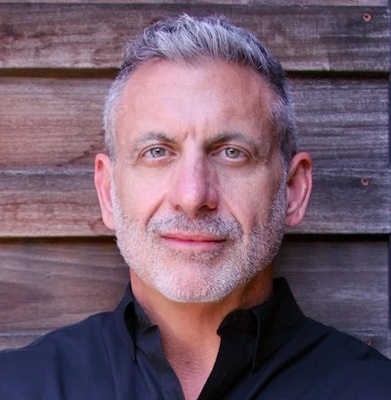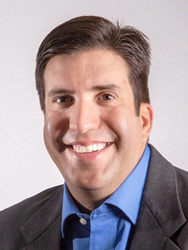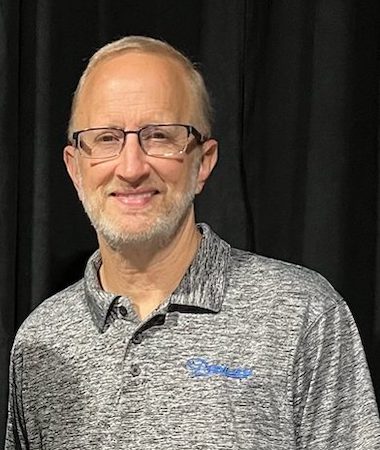Tech Focus: Venue Sound, Part 1 — When Sports and Entertainment Intersect, It’s Not Just About the Game
Audio quality has become a major factor in the fan experience
Story Highlights
Sports teams and leagues are increasingly focused on the quality of the sound in their stadiums and arenas. They have to be, because everyone else is. Consumer complaints about the quality and volume of the sound have moved to the forefront of conversations about the overall in-venue experience. Across the world, concerns about acoustics drive concerns about the “emotional connection” that spectators can have with what takes place on the field or the stage, and stadiums and arenas increasingly have to present both sports and music.
The market for live sports-venue sound is roughly where concert sound was 20 years ago: a cohort of ticket buyers have significantly higher expectations of the experiences they’re paying for. It’s not just a game anymore: it’s an afternoon and evening at a venue that will likely offer music, food, betting, and other entertainment elements and often cost several hundred dollars. The sound has to match the prices and expectations. That’s garnering attention from sound-system vendors and giving venue operators more options.

PK Sound’s Ralph Mastrangelo: “Sports venues need to accommodate entertainment, both as separate events and combined.”
“Sports is an exciting market to be in, and that’s why I’m putting so much effort into it,” says Ralph Mastrangelo, director, North American sales, PK Sound, which has had success in music and other touring markets and has begun targeting the sports-venue sector. “Sports venues need to accommodate entertainment, both as separate events and combined.”
One area his company seeks to leverage is increased demand for high-impact music systems that can cover the field for warm-ups and practices. Some venues will use the installed sound system for that application, although that can be overkill, pumping loud music throughout a mostly empty venue. In some cases, teams have installed smaller PAs dedicated to that specific task or deploy portable PA systems. Mastrangelo notes that PK Sound’s robotic–line-array technology can shift coverage areas by robotically moving the line-array components to change coverage patterns: “We believe it’s a more cost-effective solution for sports venues that need to use the field for different things.”
Baseball Embraces the Bass
Whereas the NBA and the NFL are known for the enhanced bass of contemporary music — the Super Bowl Halftime Show’s latest five outings have been anchored almost completely by hip-hop and R&B artists, from Bad Bunny in 2020 to Usher this year — baseball still only dips its toes into the pool’s deep-low end. Four years ago, the Los Angeles Dodgers installed 21 L-Acoustics SB28 subs in updating its sound system’s right-field tower, with three more on the left-field side — a considerable amount of low-frequency energy (LFE) for a typical MLB ballpark.
A main consideration was to keep that LFE within the park to prevent noise complaints. The concern was heightened by the stadium’s use of a point-source system design, which is more typical of college-football stadiums and is intended to throw sound very long distances. Noise issues can be a bigger problem for a ballpark, where half of a team’s 162 games a year are played, than for an NFL stadium, which is used a dozen or so times a year.
“The subwoofers are arranged in an endfire configuration,” explains Derek O’Hara, director, planning and development, Los Angeles Dodgers. “That provides some critical directionality to the low end, keeping it from escaping the stadium walls and keeping the impact on the seating.”
Mike Hedden, president/CEO, Danley Sound, which is prominent in the college-football–stadium sound-system market, has been advocating for baseball to embrace the bass. He cites the system Danley installed last year in Lawrenceville, GA’s Coolray Field, which includes an ample array of the company’s THMINI15 subwoofers. They have transformed the ballpark’s entertainment value, he notes, adding that that’s especially important since the venue’s home team, the Savannah Bananas, are baseball’s equivalent of the Harlem Globetrotters.
As important, Hedden adds, is that, as part of the Atlanta Braves’ development system, the bass-enhanced ballpark introduces players to that kind of music environment. “[Major League Baseball] still has a built-in bias against the low end,” he says, acknowledging the subjectivity of that pronouncement. “Baseball stadiums usually use distributed sound systems, which are fine, but they tend to lose gas below 100 Hz. That’s the technical side of it. I also think there’s a sense that that’s not what baseball’s about. But sports is about entertainment — now more than ever.”

WJHW’s Mark Graham: “Bass is driving system design these days, but so is speech intelligibility. Our job is to make it all sound good.”
WJHW Principal Mark Graham agrees and notes that, in recent years, the consulting firm been installing more subs in ballparks, including the Detroit Tigers’ Comercia Park this season. Some of baseball’s seeming reluctance to fully embrace bass has to do with its sense of historical legacy as “America’s pastime,” as well as with an emphasis on announcer speech intelligibility that has tended to make music more an underscore than a focus at games.
On the other hand, he points out, arenas have used line-array systems since music touring made them common in the 1990s. And, as more concert performances take place in stadiums, touring shows expose venue managers and team owners to trends in live-sound technology.
“Bass is driving system design these days, but so is speech intelligibility,” says Graham. “Our job is to make it all sound good.”

Diversified’s Justo Gutierrez: “Teams want the same sound that is heard in those venues when music tours come through them.”
There is some cross-pollination between sports when it comes to LFE, suggests Justo Gutierrez, director, engineering, sports, Diversified. Fans accustomed to bigger bass in NBA arenas and NFL stadiums are part of what’s driving the MLB toward its rendezvous with low end.
“It’s customer demand, really,” he says, noting integrator Diversified’s recent additions of subs to PA systems at the Philadelphia Phillies’ Citizens Bank Park and the San Francisco Giants’ Oracle Park. “Adjacent sports can affect how each sport presents itself to fans.”
That goes for concerts and other entertainment productions, too, he adds, particularly those held in sports venues, when concertgoers experience those places as entertainment spaces.
“That’s part of what has driven the so-called rider-ready sound-system brands in the sports sector,” Gutierrez points out. “Teams want the same sound that is heard in those venues when music tours come through them.”

d&b audiotechnik’s Stephen Seable: “Keeping the sound on the seats and away from neighboring areas has become more important in recent years.”
Some sound-system brands may benefit from the rider-ready dynamic, says Stephen Seable, business development manager, installations, d&b audiotechnik, whose systems are in the MLB Angels’ Angel Stadium, the NHL Predators’ Bridgestone Arena in Nashville, and Edmonton Oilers’ Rogers Place Arena. However, he believes that the brands’ ability to manage coverage-pattern control has become important to sports-venue designers seeking to mitigate noise levels outside the venue.
“Keeping the sound on the seats and away from neighboring residential areas has become more important in recent years,” he says. At last month’s Integrated Systems Europe (ISE) trade event in Barcelona, he adds, d&b and two other manufacturers showed new cardioid loudspeaker designs that create tighter coverage patterns.
Bigger Sound and Video
Sound may increasingly compete with video for media real estate in sports venues as the former gets louder and the latter gets bigger. Among potential interactions, massive scoreboards can create huge reflective surfaces and crowd PA-component placements.
Daktronics, whose primary focus has been developing large-format videoboards for sports venues, has been integrating sound systems into some of its largest models for two decades.

Daktronics’ John Olsen: “Because we tend to turn our heads in the direction that sound is coming from,” adding audio to videoboards keeps fans’ attention on the displays.
The format is particularly suited for large college-football stadiums for both ergonomic and cost reasons, says John Olsen, national audio sales, Daktronics. “Because we tend to turn our heads in the direction that sound is coming from,” he points out, the format can keep eyes glued to video displays combining game information and advertising. An example is the combined audio/video system installed at Riddle-Pace Field ballpark at Troy (Alabama) University. A 21-ft.-high by nearly 71-ft.-wide LED video display in centerfield features a Sportsound 1500HD audio system, as well as a time-of-day clock, pitch clock, and speed-of-pitch display.
A Question on Immersive
Will sports venues’ future include immersive sound? Although open-air stadiums are not generally well-suited for that type of system, it’s part of the wider array of choices available to sports venues to support entertainment applications. “That might be the next hill to climb, at least for arenas,” says Diversified’s Gutierrez, noting that some systems can accommodate immersive operation with the addition of appropriate processing.
That’s the case at the NFL Seattle Seahawks’ Lumen Field, where a d&b audiotechnik system installed as the venue’s delay system has the foundations of the company’s Soundscape immersive functionality available. (The stadium will have a complete d&b PA system ready for the 2024 NFL season.)
Immersiveness has been of interest to a growing number of sports venues pursuing new ventures in fan engagement, d&b’s Seable says. However, he points out, immersive content for such systems is still in short supply.
Furthermore, it’s not a straightforward matter to give every seat in a stadium or arena the same maximum effect. The greater granularity of the immersive effect requires more speakers — rule of thumb: to achieve localization of a sonic object, each seat needs to be within range of three speakers — and, for large venues, that can drive costs to exceed return on investment.
On the other hand, Seable says, an immersive processor can help create an improved sonic experience by adding clarity and intelligibility to the sound and can reduce listener fatigue, which can afflict patrons of extremely loud events.
In doing much more than just hosting games and matches, sports venues must navigate increased regulations and restrictions on how loud they can get. But the value of the convergence of sports and entertainment, along with the solutions that address the challenges, is making the effort worthwhile.
Click here for Tech Focus: Venue Sound, Part 2 — Five Sports Venues That Opted for Music-Quality Systems.

